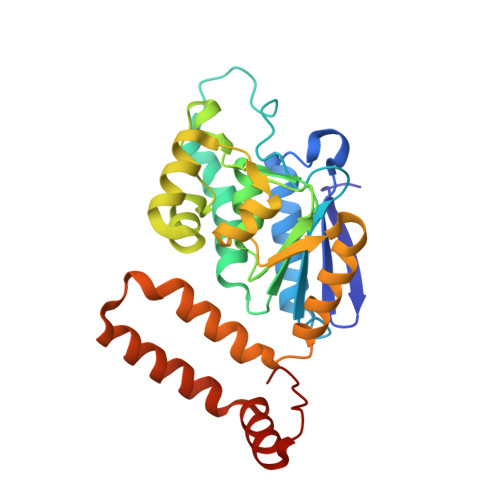Structural and Mechanistic Basis of an Oxepin-CoA Forming Isomerase in Bacterial Primary and Secondary Metabolism.
Spieker, M., Saleem-Batcha, R., Teufel, R.(2019) ACS Chem Biol 14: 2876-2886
- PubMed: 31689071
- DOI: https://doi.org/10.1021/acschembio.9b00742
- Primary Citation of Related Structures:
6SL9, 6SLA, 6SLB - PubMed Abstract:
Numerous aromatic compounds are aerobically degraded in bacteria via the central intermediate phenylacetic acid (paa). In one of the key steps of this widespread catabolic pathway, 1,2-epoxyphenylacetyl-CoA is converted by PaaG into the heterocyclic oxepin-CoA. PaaG thereby elegantly generates an α,β-unsaturated CoA ester that is predisposed to undergo β-oxidation subsequent to hydrolytic ring-cleavage. Moreover, oxepin-CoA serves as a precursor for secondary metabolites (e.g., tropodithietic acid) that act as antibiotics and quorum-sensing signals. Here we verify that PaaG adopts a second role in aromatic catabolism by converting cis -3,4-didehydroadipoyl-CoA into trans -2,3-didehydroadipoyl-CoA and corroborate a Δ 3 ,Δ 2 -enoyl-CoA isomerase-like proton shuttling mechanism for both distinct substrates. Biochemical and structural investigations of PaaG reveal active site adaptations to the structurally different substrates and provide detailed insight into catalysis and control of stereospecificity. This work elucidates the mechanism of action of unusual isomerase PaaG and sheds new light on the ubiquitous enoyl-CoA isomerases of the crotonase superfamily.
Organizational Affiliation:
ZBSA, Center for Biological Systems Analysis , University of Freiburg , 79104 Freiburg , Germany.















